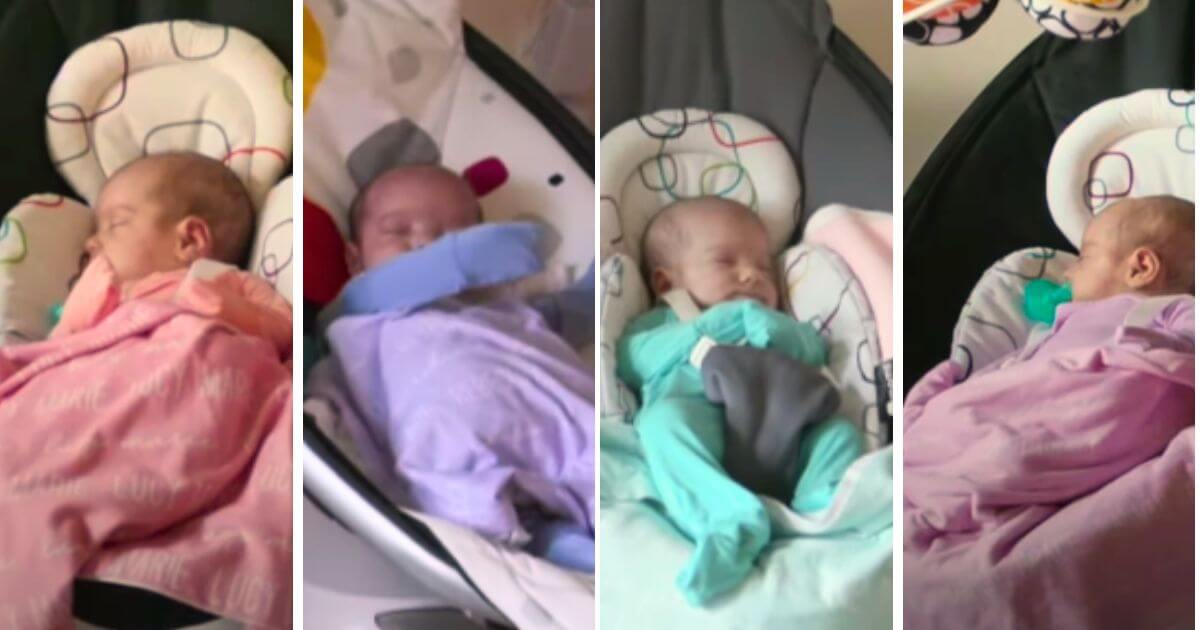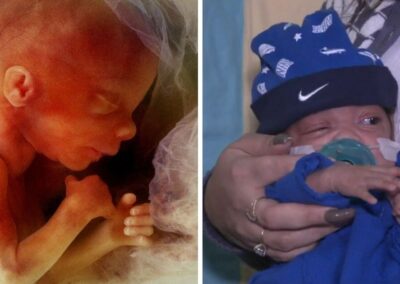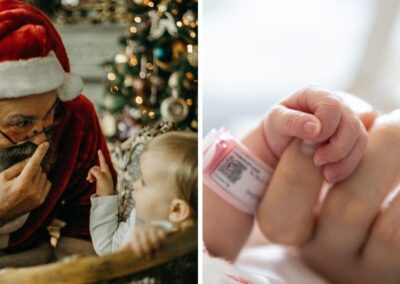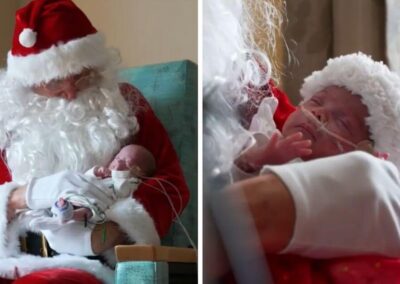A couple who had naturally occurring identical quadruplets have finally been able to take them home after three months in a neonatal intensive care unit (NICU).
Mercedes and Jonathan Sandhu were taken by surprise when they found out Mercedes was not expecting just one more baby when she became pregnant for the third time, but four.
The couple already had two sons, Luke, 3, and Aaron, 18 months, so by the time the four girls were born, Mercedes and Jonathan would have six children under 5.
“So we weren’t trying by any means, but we were excited. We loved the idea of giving our boys another sibling”, Mercedes said.
However at just seven weeks gestation, an ultrasound revealed what Mercedes called “four little blobs”.
“Since it was my third pregnancy, I told Jonathan that he didn’t have to come to my appointment. I was like, ‘There will be plenty of scans'”.
“So I’m there without him, and I’m laughing and then I’m crying. I’m a little bit hysterical. And my doctor goes, ‘Let’s call your husband!’”.
Initially, Jonathan thought the news was a practical joke. “He kept asking, ‘Are you serious?’” Mercedes said.
Carrying naturally conceived quadruplets is extremely rare and comes with additional risks
The mathematical probability of having spontaneous identical quadruplets is 1 in over 15 million according to reports. There are also increased risks associated with carrying multiple babies and a higher chance of prematurity.
The risk for Jonathan and Mercedes’ quadruplets was increased further because all four babies shared one placenta.
“With high-order multiples, all sharing one placenta, they were at elevated risks for nearly all the bad things that can accompany premature infants”, Jonathan explained.
However the couple tried to look at the situation in a positive light.
“I tried not to think about the negative outcomes too much because that doesn’t do you any good”, Mercedes said.
“The odds of conceiving identical quadruplets is mind-blowing”, Jonathan added. “So the odds of them making it through anything is a slam dunk compared to that”.
When all four babies were born safely, the couple were relieved.
“The pregnancy was high-risk for Mercedes, too, and I was crying in the delivery room because it was like, ‘Everyone is safe. We made it’”, Jonathan said.
The girls all spent 2-3 months in the NICU
The four girls, Hannah Grace, Lucy Marie, Rebecca Claire and Petra Anne, were born by caesarean section at 29 weeks gestation. Hannah, the largest of the four, was 2 pounds 13 ounces, while the smallest, Petra, was just 2 pounds 7 ounces.
Hannah and Petra only spent two months in the NICU, while Lucy went home a week later and Rebecca was able to join her family after three months in total.
Now all the quadruplets are at home and have been able to meet their two older brothers.
“The best part has been watching our boys welcome their baby sisters”, Jonathan said. “They are obsessed with the girls”.
“Seeing our little family come together has been the most heartwarming moment of our lives”.
Numbers of selective foetal reduction abortions have increased in recent years
While Jonathan and Mercedes had a positive outlook on the prospect of their four baby girls, this is not always the case for expectant parents or the medical staff supporting them. Parents may be offered a selective foetal reduction abortion whereby, in cases of multiple pregnancies – twins, triplets or more – one or more is aborted to ‘reduce’ the number of babies in the womb. St George’s University Hospitals Twins Trust Centre for Research and Clinical Excellence states on its website that “It is now recommended that women pregnant with triplets should be given the option of reducing the pregnancy to twins or a singleton to reduce the[se] risks”.
In 2019, there were 126 selective reduction abortions, a 75% increase from 2011 when there were 72 selective terminations.
In 2011, The National Institute for Health and Care Excellence (NICE) issued guidance that outlined that women should be given information on the “physical risks and psychological implications” of selective reduction abortions. The guidance suggested that the procedure of aborting one of two or three foetuses is itself dangerous, and may later lead to emotional problems in both the mother and the remaining twin(s).
Spokesperson for Right To Life UK, Catherine Robinson, said “Congratulations to Jonathan, Mercedes and their two sons on the addition of four new babies to their family! It is wonderful to hear a story of parents embracing life on such an unexpected scale, and demonstrating in the process the amazing and unique nature of pregnancy and childbirth”.
“Hopefully stories such as these will give courage to other parents facing unexpected multiple pregnancies and help support them to champion the lives of all of their children”.












